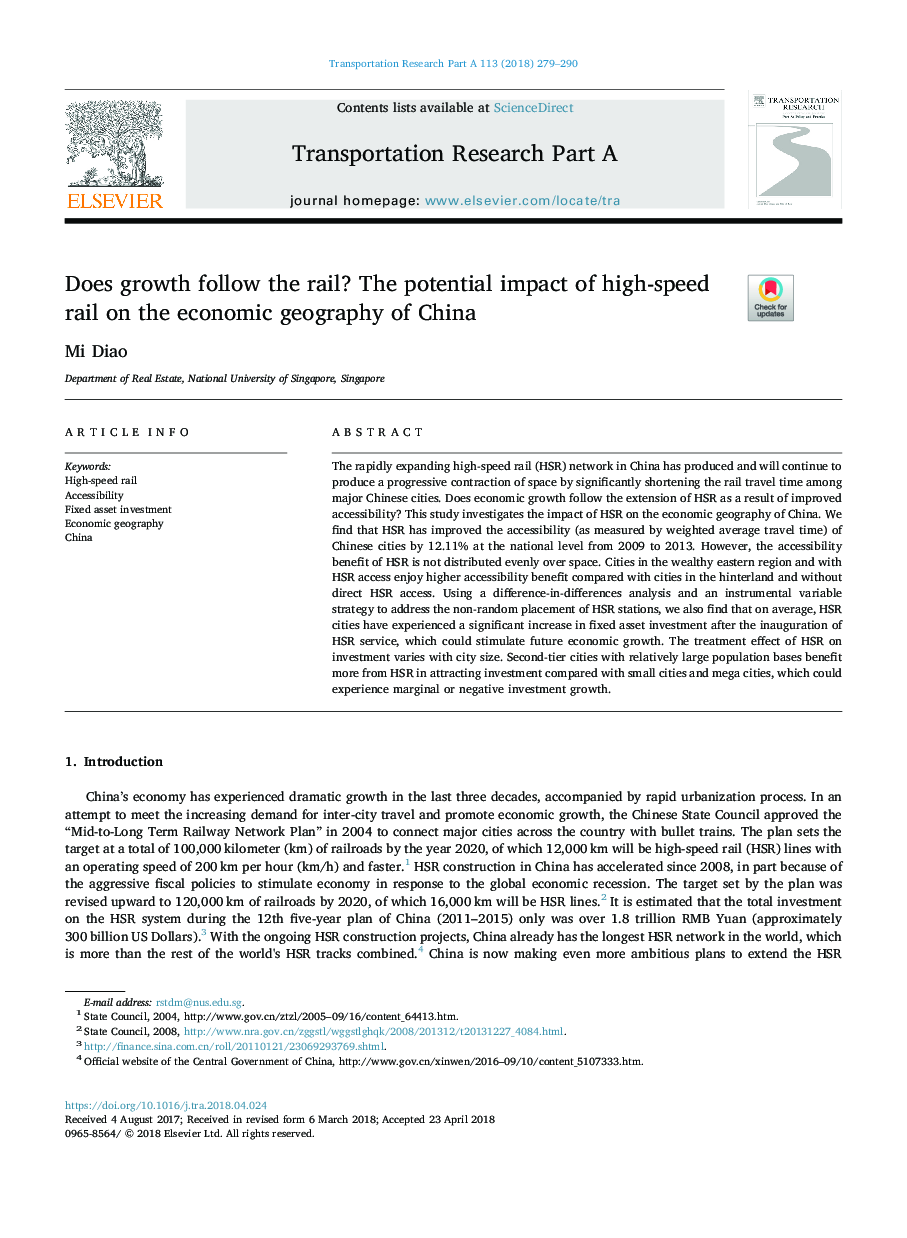| Article ID | Journal | Published Year | Pages | File Type |
|---|---|---|---|---|
| 6780140 | Transportation Research Part A: Policy and Practice | 2018 | 12 Pages |
Abstract
The rapidly expanding high-speed rail (HSR) network in China has produced and will continue to produce a progressive contraction of space by significantly shortening the rail travel time among major Chinese cities. Does economic growth follow the extension of HSR as a result of improved accessibility? This study investigates the impact of HSR on the economic geography of China. We find that HSR has improved the accessibility (as measured by weighted average travel time) of Chinese cities by 12.11% at the national level from 2009 to 2013. However, the accessibility benefit of HSR is not distributed evenly over space. Cities in the wealthy eastern region and with HSR access enjoy higher accessibility benefit compared with cities in the hinterland and without direct HSR access. Using a difference-in-differences analysis and an instrumental variable strategy to address the non-random placement of HSR stations, we also find that on average, HSR cities have experienced a significant increase in fixed asset investment after the inauguration of HSR service, which could stimulate future economic growth. The treatment effect of HSR on investment varies with city size. Second-tier cities with relatively large population bases benefit more from HSR in attracting investment compared with small cities and mega cities, which could experience marginal or negative investment growth.
Related Topics
Physical Sciences and Engineering
Engineering
Civil and Structural Engineering
Authors
Mi Diao,
